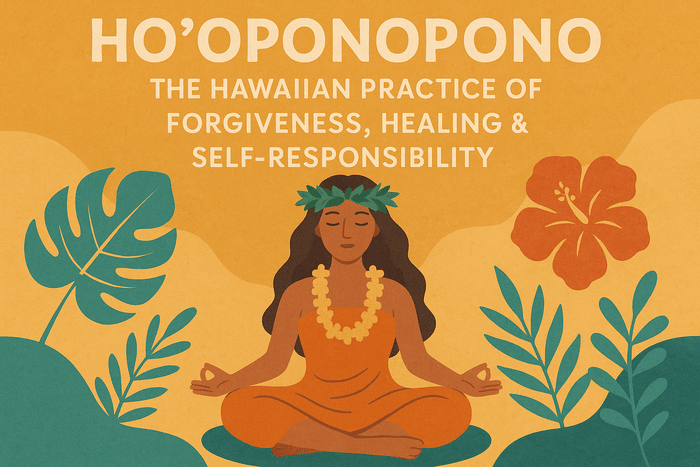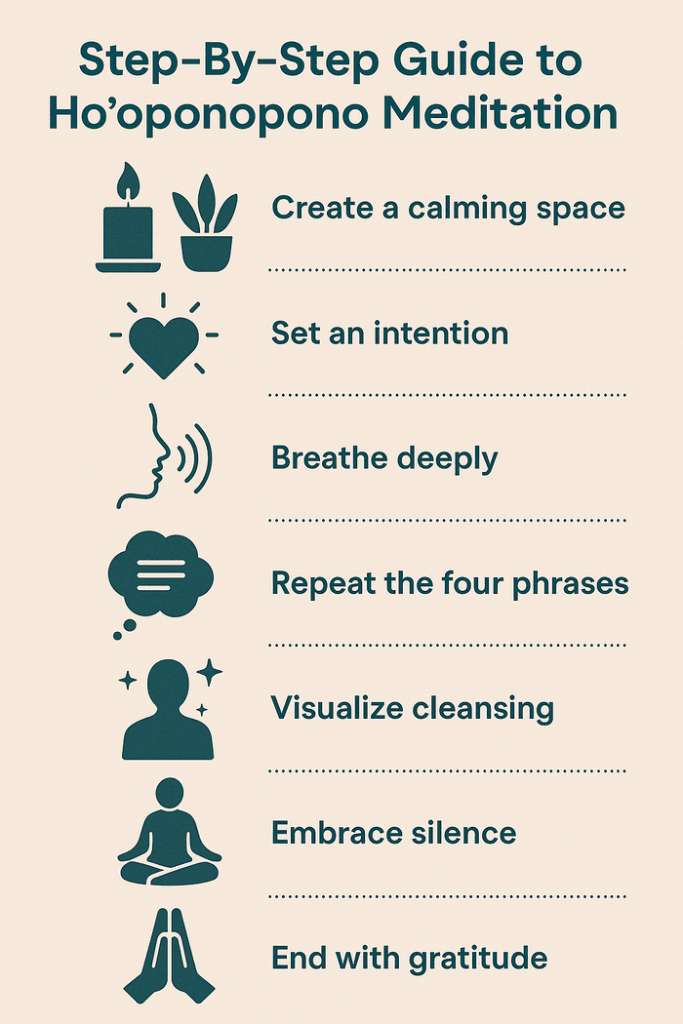
India’s economy has transformed dramatically over the last decade, and the demand for top business coach India services has grown...
Ho’oponopono is a traditional Hawaiian practice that blends forgiveness, reconciliation and spiritual healing. In the Hawaiian language, ho’o means “to make” or “to cause,” while pono means “rightness, balance or goodness.” The term literally translates to “to make right” or “to correct”, reflecting its purpose: restoring harmony within oneself and among people.
In traditional Hawaiian culture, ho’oponopono was a group process used to resolve family disputes and heal relationships. It involved prayer, discussion, confession, repentance and mutual forgiveness. Elders or family healers (kahuna) would facilitate sessions, guiding participants to acknowledge wrongdoing, take responsibility and release past hurts. The goal was to cleanse any negative emotions or karmic ties, allowing the family to move forward with renewed peace and unity.
Today, ho’oponopono is widely practiced as an individual or family meditation. It’s often reduced to a four‑phrase mantra—“I’m sorry. Please forgive me. Thank you. I love you”—but as we’ll see, the philosophy runs much deeper. At its heart is the belief that we are each responsible for everything that exists in our reality, because everything is interconnected. By cleansing our own thoughts and feelings, we can heal ourselves and influence positive change in others.
When writing about ho’oponopono online, you’ll notice writers use a variety of terms—“Hawaiian forgiveness prayer,” “ancient healing mantra,” “reconciliation practice,” or even “quantum healing method.” These synonyms help search engines associate the page with related user queries. In this article, you’ll see phrases like forgiveness meditation, self‑healing practice and four‑phrase mantra to enrich the semantic footprint without diluting the core keyword, Ho’oponopono.

Ho’oponopono originated in ancient Polynesia, particularly among Hawaiian families. Traditional sessions were akin to a family council where participants gathered to air grievances, confess wrongs and work through emotional conflicts. The process was guided by an elder or kahuna who facilitated prayers, discussion and ritual forgiveness. The main aim was to restore harmony within the family and community.
The practice emphasized confession, repentance and mutual restitution. Participants might express sorrow for their actions, ask forgiveness, and then present symbolic or practical reparations to make things right. Through this process, resentment and guilt were cleansed, preventing illness and misfortune believed to arise from unresolved conflicts. The key idea was that unresolved emotions could manifest as physical or spiritual ailments—so healing the relationships healed the body and spirit as well.
In the 20th century, ho’oponopono evolved from a community ritual to an individual meditation practice. Morrnah Simeona, a Hawaiian healer and kahuna lapa’au, played a major role in modernizing the practice. She created a method known as Self‑I‑Dentity through Ho’oponopono (SITH), which adapts the traditional process into a personal spiritual discipline. Simeona taught that individuals could clear their own memories and karmic ties by repeating the four phrases and accepting 100% responsibility for everything in their experience.
Later, Dr Ihaleakala Hew Len, a student of Simeona, helped popularize Ho’oponopono globally. According to widely circulated stories, he cured an entire ward of criminally insane patients in a Hawaiian hospital without directly treating them; instead, he studied their files and practiced Ho’oponopono on himself, taking responsibility for their problems and cleansing his own memories. He claimed that by healing himself, he healed them. Although debated, this story fuels interest in Ho’oponopono and illustrates its radical philosophy of total responsibility.
At the core of modern Ho’oponopono practice lies a simple four‑phrase mantra. Each phrase corresponds to a step in the process of cleansing and reconciliation. Repeating these phrases with sincerity is believed to clear negative energy and restore harmony. Let’s break down what each step means and how to practice it.
Begin by acknowledging that you have contributed—intentionally or not—to your current situation or the issue at hand. Even if you cannot see a direct causal link, Ho’oponopono teaches that your subconscious memories and beliefs shape your reality. Saying “I’m sorry” expresses genuine remorse and recognizes that something within you needs healing. This step isn’t about self‑blame but about owning responsibility and opening the heart.
To practice:
After acknowledging your part in creating or perpetuating the issue, you ask for forgiveness. Traditionally, this plea is directed both outward and inward: to those you’ve hurt, to your higher self, and even to your subconscious mind. It’s not important who exactly forgives you; what matters is opening to the act of forgiveness. This step softens the ego and paves the way for release.
To practice:
Gratitude transforms the energy of the practice. Saying “Thank you” signifies appreciation for the opportunity to heal and for the forgiveness being granted. It shifts your focus from regret to acceptance and reinforces the belief that things are already moving toward harmony.
To practice:
Love is the ultimate healing force. Saying “I love you” invites unconditional love into your heart and extends it to everyone involved—including yourself. It dissolves lingering negativity and seals the healing process with compassion.
To practice:
These four steps can be repeated in any order and as many times as needed. Some practitioners chant them continuously as a meditative mantra, while others use them intentionally during difficult conversations or emotional triggers.
Practitioners report numerous benefits from regular Ho’oponopono practice. While scientific research on the technique is limited, anecdotal evidence and psychological principles suggest that it can foster significant emotional, relational and spiritual benefits.
Although scientific studies on Ho’oponopono are scarce, the practice’s emphasis on stress reduction and emotional release suggests potential benefits for physical health. Chronic stress is linked to numerous diseases, and practices that enhance forgiveness and reduce rumination have been shown to lower blood pressure and improve immune function. Some practitioners report improved sleep and decreased pain after adopting Ho’oponopono, likely due to reduced psychological stress.

Ready to try Ho’oponopono? Here’s a structured approach you can use as a daily meditation or whenever you feel out of balance. Feel free to adjust the timing and environment to suit your needs.
The most famous modern story related to Ho’oponopono involves Dr Ihaleakala Hew Len. As recounted by Joe Vitale in the book Zero Limits, Dr Hew Len was hired as a psychologist at a Hawaiian state hospital for mentally ill criminals. Instead of traditional therapy, he studied patients’ files and practiced Ho’oponopono on himself, repeating the four phrases and accepting responsibility for the patients’ conditions. Over time, their behavior improved, some patients were released, and the ward eventually closed. While critics question the details, the story illustrates Ho’oponopono’s radical approach: heal yourself to heal others.
Argentinian‑American author Mabel Katz learned from Dr Hew Len and developed her own teachings. She emphasizes what she calls “Zero Frequency”—a state of clarity and freedom from limiting memories. Katz teaches that by practicing the four phrases, individuals can return to their natural state of peace and make inspired decisions. Her books and workshops spread Ho’oponopono across the Spanish‑speaking world and beyond.
Modern Ho’oponopono wouldn’t exist without Morrnah Simeona, the kahuna lapa’au who updated the practice for individuals. She combined traditional Hawaiian healing with influences from Christianity, Eastern philosophies and holistic wellness, framing Ho’oponopono as a spiritual process accessible to anyone. Simeona’s approach underpins the Self‑I‑Dentity through Ho’oponopono program.
Numerous authors, coaches and spiritual teachers now teach Ho’oponopono or incorporate it into other practices. Some emphasize combining it with affirmations, breathing exercises, or meditation. Others integrate Ho’oponopono with modern psychotherapy, noting its similarity to cognitive reframing and mindfulness. When exploring teachers, look for those who respect Hawaiian cultural roots and provide accurate context.
Bringing Ho’oponopono off the meditation cushion and into everyday activities can deepen its impact. Here are practical ways to weave the practice into your routine:
Ho’oponopono offers a simple yet profound pathway to healing. By combining remorse, forgiveness, gratitude and love, this ancient Hawaiian practice helps us cleanse limiting beliefs and restore harmony within ourselves and our relationships. Whether you’re dealing with grief, resentment, stress, or simply seeking more balance, Ho’oponopono provides a tool for transformation.
The core message of Ho’oponopono is that we are responsible for our internal experiences. When we acknowledge our role in creating reality, we claim the power to change it. This doesn’t mean blaming ourselves for every negative event; rather, it invites us to cleanse the energies and memories that shape our perceptions. Practicing Ho’oponopono can lead to deep emotional release, stronger relationships, spiritual growth and even physical wellbeing through reduced stress.
Ready to experience Ho’oponopono for yourself? Start by choosing a quiet moment and repeating the four phrases with sincerity. Observe how your mind and body respond. Consider incorporating the practice into your morning routine or journaling practice. For a guided experience, look up meditations or audio tracks featuring the mantra, or join a workshop led by a qualified teacher. You might also explore books like Zero Limits by Joe Vitale and Dr Hew Len or The Easiest Way by Mabel Katz to deepen your understanding.
Remember, healing is a journey rather than a destination. Ho’oponopono teaches us that by taking responsibility, asking for forgiveness, expressing gratitude and choosing love, we can step into a life of greater peace and freedom. If this article resonated with you, share it with friends and family or leave a comment about your experience. May the practice of Ho’oponopono help you clear the stones from your bowl of light and restore your inner radiance.
In Hawaiian, ho’o means “to cause” or “to make” and pono means “right, balanced, or good.” Together, Ho’oponopono means “to make right,” “to correct,” or “to restore balance”
No. Ho’oponopono is a spiritual practice rooted in Hawaiian culture, but it is not a religion. It can be practiced by people of any faith or no faith. The core principles—responsibility, forgiveness, gratitude and love—are universal.
While many people report improved physical wellbeing after practicing Ho’oponopono, there is limited scientific research to support specific health claims. The practice may reduce stress and emotional tension, which can positively influence health. It should be used as a complement to, not a substitute for, medical treatment.
No. Ho’oponopono focuses on self‑responsibility and cleansing your own memories. You don’t need the other person’s participation. However, forgiveness toward others often arises naturally as you practice.
You can repeat the four phrases anytime—during meditation, while driving, in conversation or before bed. Regular, consistent practice deepens its effects. Some practitioners recite the mantra continuously to maintain a state of mindfulness.
Traditionally, the order is “I’m sorry. Please forgive me. Thank you. I love you.” However, many teachers say the order isn’t important as long as you cover each element. Experiment and find what feels most natural.

India’s economy has transformed dramatically over the last decade, and the demand for top business coach India services has grown...

When searching for a certified life coach program price, it’s natural to start by comparing tuition fees. Aspiring coaches want...

Neuro-Linguistic Programming (NLP) is experiencing a resurgence in India. Social media, workshops and high-energy seminars promise instant breakthroughs by rewiring...

Many professionals pursue the title of Certified Organizational Development Coach with the expectation that a credential alone will open corporate...

Some providers offer to fast-track you to PCC status through purely online modules for a fraction of the cost of...

Executive coaching has evolved from a niche service for struggling leaders into a strategic investment for organisations aiming to build...

When prospective coaches research training options, cost is often the first number they look for. A quick internet search produces...

Deciding to invest in life coach training programmes can be a transformative milestone in your personal and professional journey. In...

Choosing the right online life coaching courses can be one of the most transformative decisions you ever make.